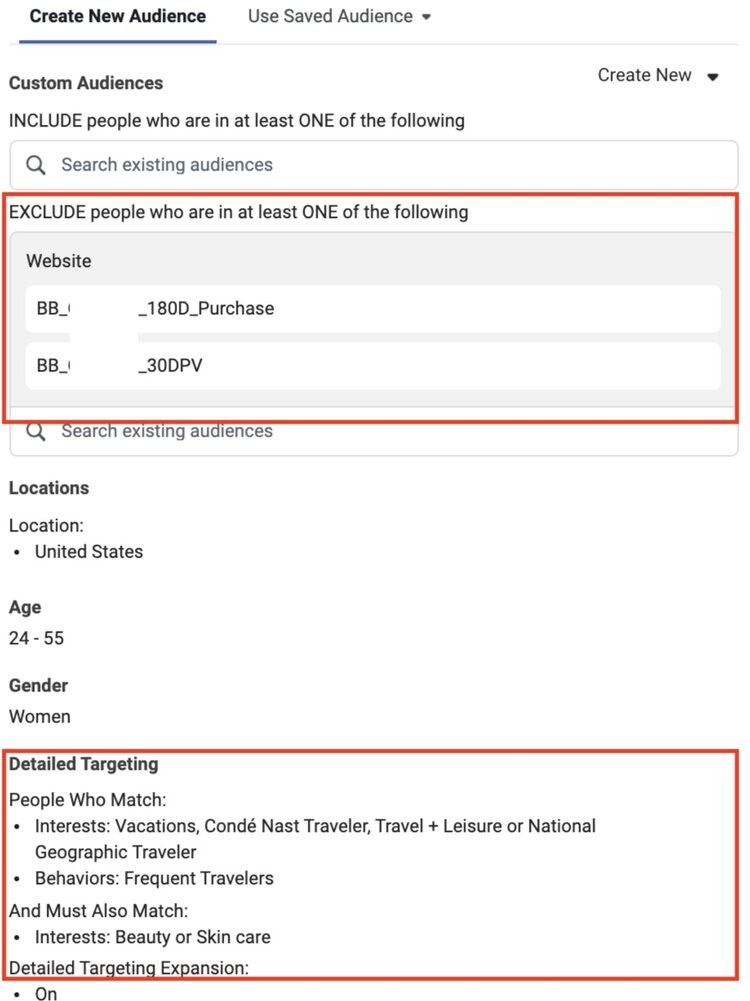Now that you have successfully opened a Facebook Business Manager & Ad Account, and integrated your pixel for proper tracking, you can carry on with the steps to set up your Facebook Ad Account for success.
In this article, we are going to explain the Facebook Campaign structure to make sure you’re properly targeting people based on where they are in their customer journey & you’re not bidding against yourself within your own account.
To begin with, in a regular ad account with not too complex structure, product categories, goals, different websites, and so on, starting with only 3 campaigns to target customers during their shopping cycle is the right way to start.
When we say customer journey, what we mean is:
- A person who has never heard about you, or been to your site (Prospect/ Acquisition)
- A person who has been to your site but never purchased (Retargeting)
- A person who has previously purchased a from you (Retention / Remarketing)
As clear as it is, targeting these 3 types of people with the same creatives is not a great idea. You can definitely increase your ad account performance by building the right funnels and creative strategy for each funnel.
The most important thing to build a successful Facebook Ad Account is to understand how Facebook’s bidding structure works (right now – things can always change in the future).
Every different journey should be set up as a Campaign, every different audience should be targeted as an Ad Set and each Ad Set should have 3-4 different creatives for better ad/ audience performance optimizations.
To explain this better, if you want to bring new users to your website, you should start with a new Acquisition Campaign. Under that campaign, you can decide what sort of different audiences you would like to target. For example, if you already have conversions on your site (the suggested size is a min 1000 conversions), you can build a Lookalike Audience and use this to build your first ad set. Or you can decide to target people based on different interests that might match your product. You can build another ad set targeting people who showed interest in some of your competitors for example.
The key to a successful campaign structure is, to exclude people who are in different parts of their journey while setting up your Ad Sets. If you’re going after a new audience, make sure you exclude your site visitors & people who have purchased from you. Here is an example:
Here you can see the purchase & 30 day page view exclusions.

We do this for multiple reasons. The most important ones are:
- Campaigns bid against each other, but ad sets won’t. If you build different campaigns and exclude the participants of these 3 levels of the journey from your ad sets, you’ll have way less bidding against the same people over and over again
- This way, you can build a better creative strategy. Targeting someone who has seen your ads, been to your site but not yet purchased is very different from targeting someone who has never heard from you or your services before.
- You can calculate the CPA (cost per acquisition) for different journeys separately. Your blended Facebook CPA is very important, but separating campaigns and analyzing per campaign (customer journey) CPA will help you understand your customer trends. For example, if your acquisition campaign CPA is very high but retargeting is very low, your customers might have a longer shopping cycle, they might need more convincing before making their purchase decision, your acquisition ads might not be strong enough to convince them, etc.
Once you build the different audiences under each ad set and exclude the other 2 (retargeting & retention), your first Acquisition campaign will be completed. After this step, what you need to do is, start building your Retargeting Campaign.
The same logic goes here too. But under this campaign, since you’re already targeting people who have been to your site before, you need to only exclude previous shoppers from your ad sets. Under Retargeting, you can again build different ad sets with different targeting. Building retargeting audiences takes trial and error just like anything on Facebook advertising. For example, you can build:
- People who added products to their shopping cart but not purchased in the last 14 days
- People who have been to your site in the last 30 days, but not added any products to their cart (30 Day Visitors)
- 60 Day Visitors
- Based on the shopping cycle, promotions, new launches, etc 90 Day Visitors.
Again, the key is to exclude previous purchasers from each ad set to make sure your campaigns are steering clear from each other. It’s not a bad practice to exclude each audience from the other as well, especially for retargeting & retention. As much as ad sets don’t bid against each other, cookie tracking is not always perfect and it won’t hurt to spend a couple of seconds more here to eliminate and overlap.
Once you’re done with your retargeting campaign, the last campaign set up is for Retention/ Remarketing – targeting people who have already purchased from you.
For a fairly new site, an eCommerce brand during their growth stage, a site with not too much traffic or previous conversions, it’s a good practice to set a min of 65% – 75% of your daily spend to Acquisition, 20% – 25% to retargeting & 5% – 10% to retention.


